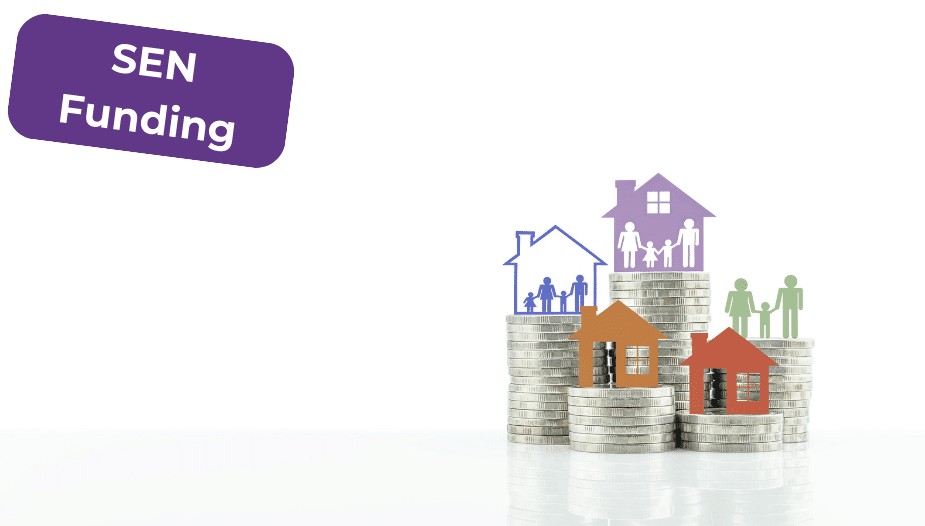How to Apply for SEN Funding for Home Education: A Quick Guide
Last Updated on
What Is SEN Funding and Why Is It Essential for Home Education?
Funding foundations

SEN funding ensures that children whose additional learning needs aren’t met by standard resources receive tailored support. For home educators in England, there are two main streams:
-
Core SEN Support (up to ~£6,000/year)
-
High Needs Top-Up (from £6,001/year upwards via an Education, Health and Care [EHC] plan)
Without this funding, families often bear the full cost of specialist materials, one-to-one tutoring, therapy sessions, or assistive technology—expenses that can quickly escalate.
Who Qualifies for SEN Funding When Home Educating?
How does my local authority determine eligibility?
Local Authorities (LAs) assess whether your child’s specific needs:
- Substantially impede their ability to learn using standard home-education materials and methods.
- Necessitate specialist provision beyond what a typical home setting can deliver.
What documentation should I prepare?
- Recent specialist reports (no older than six months) from professionals such as educational psychologists, speech and language therapists, occupational therapists, or paediatricians.
- Previous school records (if applicable), detailing interventions tried and their outcomes—this historical context can strengthen your case.
- A parent’s narrative, succinctly summarising your child’s learning profile at home: highlight their strengths, pinpoint challenges, and describe any strategies or resources you’ve already implemented.

Step-by-Step: From Assessment Request to Funding Approval
Step 1: Request an EHC Needs Assessment
- Draft a clear letter or email to your LA’s SEN team. Include:
- Child’s name, date of birth, and current address.
- A reasoned explanation of why an EHC assessment is essential in a home-education context.
- Copies of all supporting evidence and professional reports.
- Wait for the LA’s response, which must arrive within six weeks. If you don’t hear back by week five, follow up in writing to maintain momentum.
Step 2: Assessment and Plan Drafting
- Information gathering: The LA collates evidence from education, health, and social care providers.
- Panel review: A multidisciplinary team evaluates whether an EHC plan is necessary.
- Legal timeframe: From your initial request to the final EHC plan, no more than 20 weeks may elapse.
Step 3: Consultation and Finalising the EHC Plan

- Draft plan issued: You’ll have 15 days to review and provide feedback—raise any concerns, suggest amendments, or clarify provisions.
- Final plan publication: Within two weeks of consultation closing, the LA will issue the finalised EHC plan, detailing required support and associated funding bands.
Which Funding Band Applies—and What Can It Cover?
| Funding Band | Annual Funding Range | Typical Uses |
|---|---|---|
| Core SEN Support | Up to £6,000 | Specialist apps/subscriptions, part-time tutor fees, sensory tools |
| Top-Up Band A (EHC Plan) | £6,001 – £10,000 | Small-group classes, one-to-one academic support |
| Top-Up Band B (EHC Plan) | £10,001 – £25,000 | Intensive therapy (e.g., speech, occupational), adaptive devices |
| Exceptional Costs (Band C) | £25,001 and above | Residential courses, bespoke technology suites, high-cost equipment |
Quick note: Funding band thresholds and top-up rates can vary slightly between LAs, especially in high-cost areas such as London. Always verify your specific LA’s published rates.
What Is the Expected Timeline for Each Stage?
| Milestone | Legal Timescale | Practical Tip |
|---|---|---|
| EHC needs assessment decision | 6 weeks | Follow up by Week 5 if no acknowledgment. |
| Full EHC plan completion | 20 weeks | Submit all evidence promptly to avoid delays. |
| Draft plan consultation period | 15 days | Provide concise, written feedback to streamline finalisation. |
| Final plan issuance | 2 weeks after the consultation | Confirm receipt and check the effective start date. |
| Annual review | Every 12 months | Gather new evidence by Month 11 to stay ahead of schedule. |
Real-Life Spotlight: The Patel Family’s SEN Funding Journey
| Step | Action Taken | Outcome |
|---|---|---|
| Initial Concern (Sept 2024) | Observed reading delays and social anxieties | Commissioned an educational psychologist’s report |
| Assessment Request (Oct 2024) | Submitted formal EHC assessment application | LA agreed to assess within 4 weeks—notifying promptly |
| Draft Plan Consultation (Feb 2025) | Collaborated on SMART goals (e.g., boost reading age by 12 months) | Secured 12 hours/week one-to-one tutoring, funded under Band B |
| Final Plan Issued (Mar 2025) | Confirmed Band B funding (£12,000 annual) | Purchased adaptive reading software and scheduled therapy sessions |
Key lesson: Early, proactive communication and clearly defined SMART goals can significantly accelerate plan approval.
What Should You Do Next?
- Audit your existing evidence: Ensure all professional reports are up to date.
- Craft a compelling parent narrative: Use real-life examples to illustrate your child’s unique learning profile.
- Define SMART goals: Clear, measurable, realistic, relevant, and time-bound goals will give your plan focus and direction.
- Engage proactively with your LA: Establish a good rapport with the SEN officer assigned to your case to facilitate smoother communication.
- Join local support networks: Connecting with other home-educating SEN parents can offer practical advice, emotional support, and resource-sharing.
Final Thoughts
Securing SEN funding for home education requires organisation, persistence, and clear communication—but the rewards are immeasurable. By following this comprehensive guide, understanding each funding band, and preparing robust evidence and SMART objectives, you’ll be well-equipped to secure the support your child needs. Remember, you’re not alone on this journey: local support groups, online forums, and SEND advisors are valuable allies. With the right funding in place, you can focus on creating a rich, personalised educational journey that celebrates your child’s strengths and nurtures their potential every step of the way.
Frequently Asked Questions (FAQs)
1. Can I apply for Core SEN Support without an EHC plan?
Yes. While High Needs Top-Up funding requires an EHC plan, you can seek Core SEN Support independently by demonstrating your child’s additional needs.
2. Will funding follow me if I move to a different LA?
No. You’ll need to reapply in your new LA. Retain all documentation to expedite the fresh assessment process.
3. Are therapy and medical costs automatically covered?
Only if the EHC plan explicitly names those therapies under “specialist provision.” Otherwise, you’ll need to negotiate their inclusion during consultation.
4. Can my funding be back-dated?
Generally, LAs do not backdate plans. To prevent gaps in support, submit your application as soon as you decide to home educate.
5. How flexible is the funding once allocated?
Most LAs allow minor adjustments through the annual review; significant changes in need may trigger an interim review to revisit funding levels.







